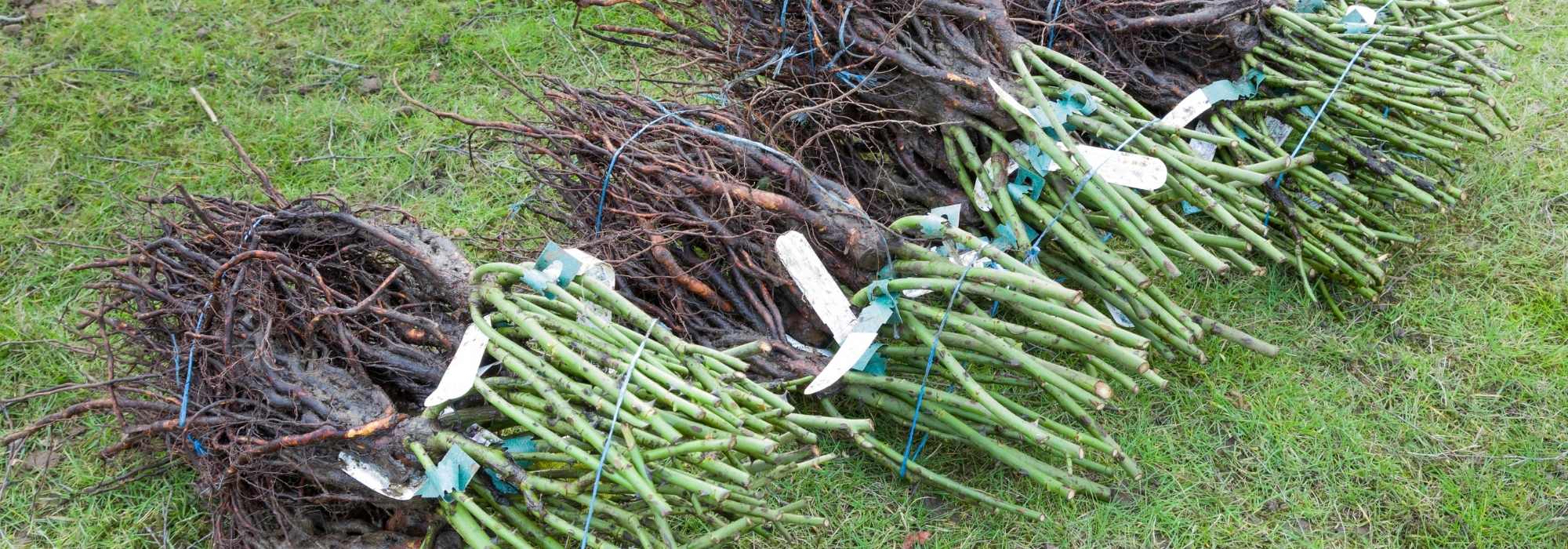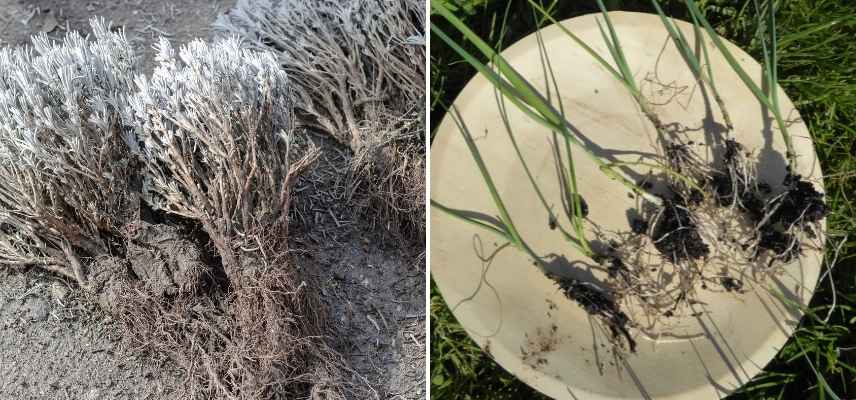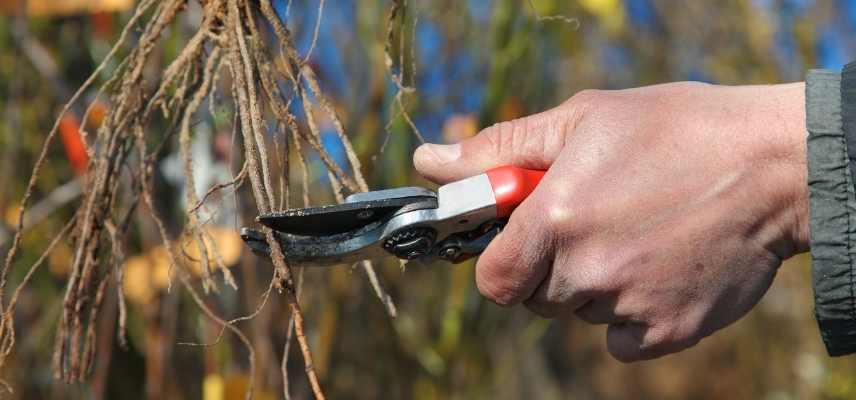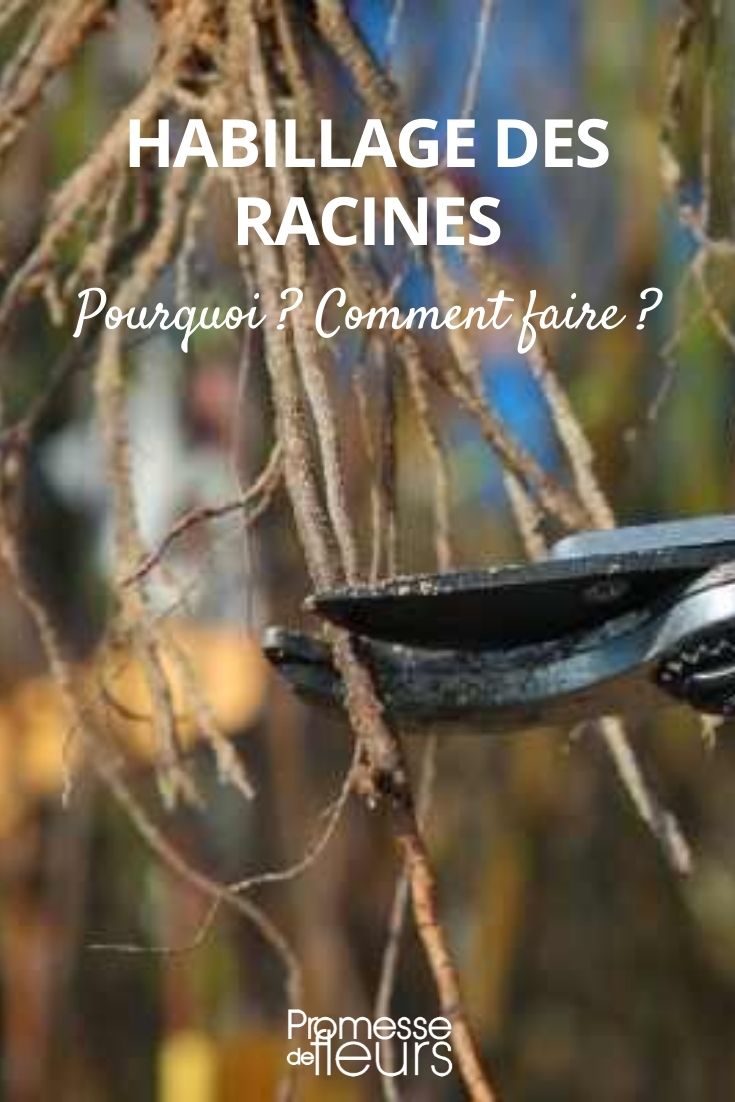
Root dressing
Technique and tips
Contents
The roots of trees and bushes, including roses, can be poorly balanced or contain injuries due to uprooting in the nursery. It is advisable to carry out what is known as root dressing, which involves lightly pruning the roots before planting. Discover how to prune and our tips to ensure the recovery of young plants with bare roots: root dressing.
What is dressing?
Root dressing is an operation that involves pruning the root system just before planting a tree, bush, or a bare root rose. This practice is carried out when the roots are damaged, disproportionate, diseased, or underdeveloped, to enhance rooting and increase the chances of successful establishment.
The plants concerned include trees, fruit trees, bushes, and bare root roses, as well as some vegetables for replanting such as leeks or asparagus.

Whether it’s a bush (here lavender) or certain vegetables like leeks, root dressing is sometimes necessary before planting your plants.
Why cut the roots before planting?
Advantages:
- This root pruning stimulates the plant, leading to a denser root hair system. Indeed, secondary roots respond to pruning by producing new branching. It’s the same principle as a cut branch dividing into two new shoots. The more the plant produces these new rootlets, the more vigorous the recovery will be;
- Roots sometimes occupy too much space. Shortening them makes it easier to fit into the planting hole and prevents the gardener from having to dig a trench to accommodate all the roots in the designated spot. Additionally, flattening or wrapping the roots against the wall of the hole could create a root ball that may harm the stability of your tree or bush;
- Cutting damaged roots is also necessary to combat fungi. They will have less surface area to contact a clean pruning shear cut than a wound.
Disadvantages:
- If your plant has a sparse or even atrophied root system, overly severe root pruning can be fatal! Therefore, act accordingly and prune with caution and restraint;
- Root dressing can have a detrimental effect when the subject has a homogeneous root hair system and shows no injuries. Keep in mind that roots store the energy and nutrients that the plant largely uses during its spring recovery. By removing too much of its secondary root system, you will weaken the plant by reducing the amount of nutrients immediately available when the beautiful season returns;
- By trimming the tips of the rootlets, you remove the area containing the absorbent hairs and the connections linking the plant to soil fungi (mycorrhizae). These connections allow the plant to significantly increase its ability to absorb nutrients from the soil. Mycorrhizae also help strengthen your plant against extreme weather conditions and diseases.
So, proceed with common sense and don’t be too heavy-handed!
When and how to go about it?
Root dressing is carried out during the plants’ dormant period (generally from November to March). This corresponds to the planting season for young plants with bare roots. To dress the roots of your plant:
- Equip yourself with a pair of gloves and a pruning shear that is perfectly sharp, clean, and disinfected;
- Examine the entire root system. If it is unbalanced and has one or more roots that are excessively long, shorten them to match the length of the other roots;
- Carefully identify any broken or damaged roots and cut one or two centimetres above the injury;
- Finally, slightly trim a portion of the small roots (rootlets or secondary roots) to stimulate their branching. A few millimetres will suffice;
- Before planting, do not forget to coat the roots;
- Always create a hole according to the size of the root system;
- Finish with a generous watering.

Lightly trim the damaged roots
- Subscribe!
- Contents
































Comments